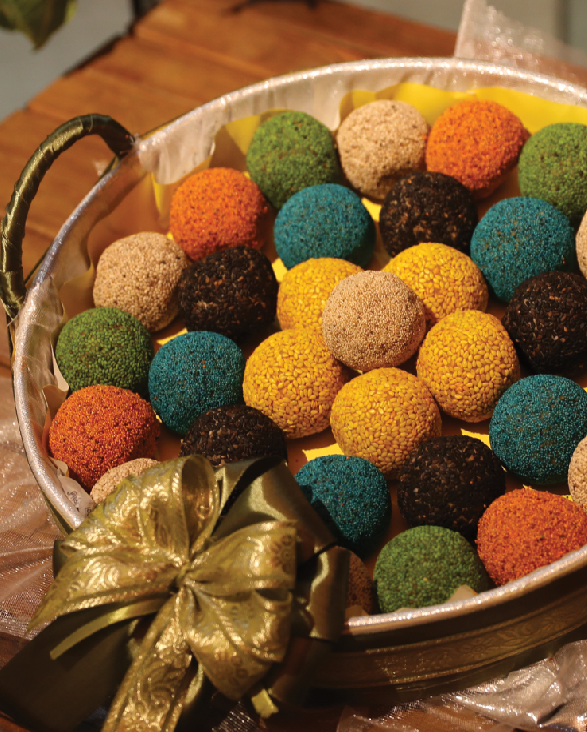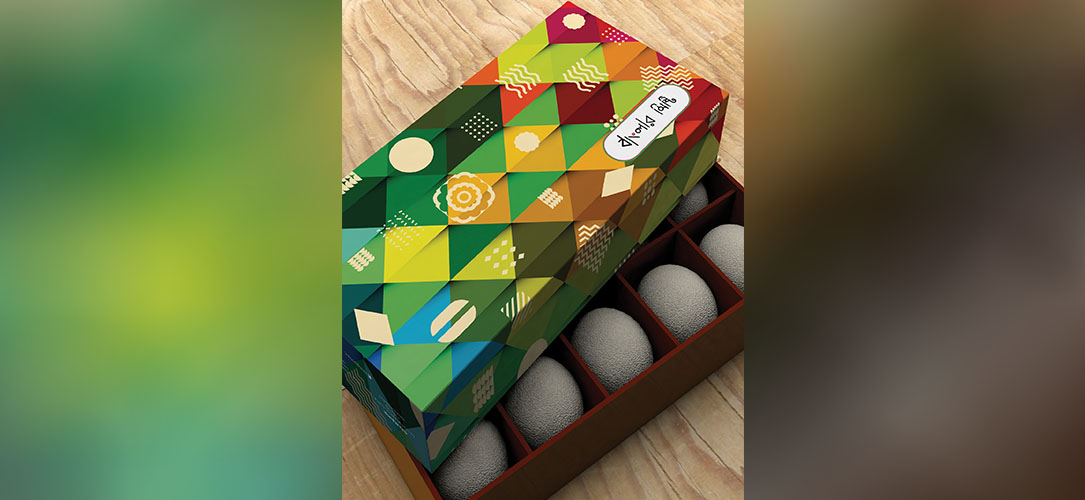Irfan Aziz meets up with the author, designer, and authority on arts and culture in Bangladesh, Chandra Shekhar Saha, to understand the depth of history and skill that goes into making our favorite sweetmeat: the shondesh
Food is such an essential part of our lives yet most people (myself included) are guilty of not knowing enough about the cuisine we indulge ourselves in. So, when I found out that I will be interviewing a man who wrote a book about a sweet I grew up loving, I couldn’t help but feel excited. Although I was bitterly disappointed and ashamed of how little I know about my own country, my rendezvous with Chandra Shekhar Shaha has inspired me to find out more about my own heritage. The author of Sandesh is one of the most knowledgeable and enthusiastic individuals I have ever had the pleasure of talking to and in about 40 minutes (which only felt like a few), he helped me realize how beautiful Bangladesh’s food culture really is.

Sandesh: An Artform
The word ‘mishti’ has two meanings in Bengali. It can be a term used to describe the sweet taste of a particular food, it is also a term to describe a kind of delicacy that is widely available in Bangladesh. Sandesh is one such delicacy but the one that Saha’s book is based on is not the everyday sandesh you get in stores, it is home-made and shares a deep bond with the mould that ultimately crafts it. One must boil the milk, add sugar to it and churn the mixture till it becomes thick and sticky, roll it into balls and then put it inside the mould where it gains a shape. But the most intriguing bit is that each of the moulds have their own intricate designs. It is the mould that pulled Saha towards sandesh and fueled his passion that eventually led him to writing a book. He went around Bangladesh collecting these moulds and the more he got to know about them, the more they fascinated him. “I had no idea that they used a bigger iteration of these moulds in Rajshahi to prepare aamshotto for newlywed grooms during wedding season. I ended up retrieving over 300 of them from different parts of the country. I filtered out the best ones and started deconstructing them, studying them and reconstructing them to form different shapes and designs. All of my research culminated into my book which I hope can sufficiently preserve and show generations a truly beautiful and unique art form.” says Saha.

Boishakh Delicacies
Bangladeshis, in essence, are foodies and desserts are the pinnacle of our identity as foodies. “If you notice, we celebrate every occasion, no matter how big or small with desserts. And it plays different roles on a different occasion. For example, if we want to have something sweet after lunch on a regular day, perhaps we will have some doi but if it’s a more auspicious occasion like perhaps the bride and groom are meeting each other for the first time, we bring out delicacies such as sandesh that are more supreme in nature. It is not discrimination but we use dessert to symbolize how special a particular occasion is to us and boishakh is perhaps one of the most special days of the year.” explains Saha.

Pohela Boishakh is the epitome of our Bengali culture and heritage and the fact that it got recognized by UNESCO is further testament to its significance. So it comes as no surprise that we let our sweet tooth run wild and treat it to all sorts of desserts. We have our traditional mishtis, we have payesh/firni followed by a plethora of pithas. Now pithas are an entirely different chapter. Saha describes how every district of Bangladesh has different sweets, every house in a village has different pitha. Sweets represent diversity at its finest and what makes it even more interesting is the fact that it is also a symbol of knowledge transformation. When two people from different families get married they carry their families respective recipes which help create a brand new type of pitha. The possibilities are endless and you see so many of them during Boishakh. One delicacy that particularly stands out for Saha is this naru that is prepared in Chittagong using a wooden mould that is made only to be used during Boishakh.
Keeping up with change
The laws of sociology demand for any city to move towards globalization and embrace other cultures. According to Saha, this is exactly what is happening in Bangladesh, particularly in Dhaka. There is a lot of knowledge out there that can only be obtained through specific practices in specific areas and such practices are slowly fading away with time. This is especially prevalent among those who prepare sweets as the art will pass away with the maker if not preserved. We might have technology that will help us replicate and produce mishtis that look and taste exactly like the original but the differences will lie in the finest details. They will not have the same sweetness, the same sponginess or the same textures inside our mouths and the sad part is not many will be able to identify that. A lot of preparation methods and local specialties have already left us behind.
However, change is not necessarily a bad thing, explains Saha. Since we are exposed to so much information, we are more curious now than ever before. This will encourage us to go to the depths of our country to experience various delicacies and will also inspire entrepreneurs and restaurateurs to introduce them to the big cities. Of course, their iteration of the dish may experience a lot of fusion which will sadly cause it to deviate away from the original taste but as long as people are willing to preserve the culture and show appreciation towards it, we will always be able to continue legacies. “However” Saha adds, I personally believe that something that truly identifies you is better off without globalization and fusion.”

